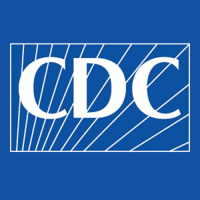Title Page
-
School
-
Conducted on
-
Prepared by
-
Location
CDC Readiness and Planning Tool to Prevent the Spread of COVID-19 in K-12 Schools
-
CDC offers the following readiness and planning tool to share ways school administrators can help protect students, staff, and communities, and slow the spread of COVID-19. This tool aligns with the Considerations for Schools, and includes the following:
• General Readiness Assessment
• Daily/Weekly Readiness Assessment
• Preparing for if Someone Gets Sick
• Special Considerations and Resources
Consideration for Schools: https://www.cdc.gov/coronavirus/2019-ncov/community/schools-childcare/schools.html
School administrators may review and complete the general readiness assessment while working with state, local, tribal, territorial, or federal officials when making initial preparations to promote healthy behaviors, environments, and operations that reduce the spread
of COVID-19. The daily/weekly readiness assessment can be used to
monitor recommended practices. Planning tools are also included to help school administrators prepare to respond if someone gets sick and to identify special considerations specific to their school community. Implementation should be guided by what is feasible, practical, acceptable, and tailored to the needs and context of each community.
GUIDING PRINCIPLES TO KEEP MIND
• Lowest Risk: Students and teachers engage in virtual-only classes, activities, and events.
• More Risk: Small, in-person classes, activities, and events. Groups of students stay together and with the same teacher throughout/across school days and groups do not mix. Students remain at least 6 feet apart and do not share objects.
• Highest Risk: Full sized, in-person classes, activities, and events. Students are not spaced apart, share classroom materials or supplies, and mix between classes and activities.
Before Someone Gets Sick
-
Make sure staff and families know they should not come to school, and that they should notify school officials if they have COVID-19 symptoms, are diagnosed with COVID-19, are waiting for test results, or have been exposed to someone with symptoms or a confirmed or suspected case.<br><br>Symptoms: https://www.cdc.gov/coronavirus/2019-ncov/symptoms-testing/symptoms.html<br><br>Community-Related Exposures: https://www.cdc.gov/coronavirus/2019-ncov/php/public-health-recommendations.html
-
Develop systems to:
-
Have individuals self-report to administrators if they have symptoms of COVID-19, have been diagnosed with COVID-19, are waiting for test results, or were exposed to someone with COVID-19 within the last 14 days.<br><br>Symptoms: https://www.cdc.gov/coronavirus/2019-ncov/symptoms-testing/symptoms.html
-
Notify individuals of closures and restrictions put in place to slow the spread of COVID-19.
-
Develop policies for returning to school after COVID-19 illness. CDC’s criteria to discontinue home isolation and quarantine can inform these policies.<br><br>Stay Home if you might have been exposed to COVID-19: https://www.cdc.gov/coronavirus/2019-ncov/if-you-are-sick/quarantine-isolation.html
-
Identify an isolation room or area to separate anyone who has COVID-19 symptoms or who has tested positive but does not have symptoms.<br><br>Symptoms: https://www.cdc.gov/coronavirus/2019-ncov/symptoms-testing/symptoms.html
-
Establish procedures for safely transporting anyone who is sick to their home or to a healthcare facility, if necessary.
-
Develop a plan to support staff, students, and families experiencing trauma or challenges related to COVID-19.
-
Other
When Someone Gets Sick
-
Point Person(s)
-
Immediately separate individuals with COVID-19 symptoms or who test positive for COVID-19.<br><br>Symptoms: https://www.cdc.gov/coronavirus/2019-ncov/symptoms-testing/symptoms.html
-
If necessary, transport sick individual(s) home or to a healthcare facility, depending on how severe their symptoms are.
-
If calling an ambulance or bringing someone to a healthcare facility, alert them ahead that the person may have COVID-19.
-
Close off areas used by a sick person and do not use these areas until after cleaning and disinfecting them (for outdoor areas, this includes surfaces or shared objects in the area, if applicable).<br><br>Cleaning and Disinfecting: https://www.cdc.gov/coronavirus/2019-ncov/community/clean-disinfect/index.html
-
Advise sick individuals that they should not return to school until they have met CDC’s criteria to discontinue home isolation.
-
Other
After Someone Gets Sick
-
In accordance with state and local laws and regulations, notify local health officials, staff, and families of cases of COVID-19 while maintaining confidentiality in accordance with the Americans with Disabilities Act (ADA).<br><br>Health Department Directors: https://www.cdc.gov/publichealthgateway/healthdirectories/index.html<br><br>Pandemic Preparedness in the Workplace and the Americans with Disabilities Act: https://www.eeoc.gov/facts/pandemic_flu.html
-
Notify individuals of closures and restrictions put in place due to COVID-19 exposure.
-
Advise those who have had close contact with a person diagnosed with COVID-19 to stay home, self-monitor for symptoms, and follow CDC guidance if symptoms develop.<br><br>Community-Related Exposure: https://www.cdc.gov/coronavirus/2019-ncov/php/public-health-recommendations.html<br><br>Quarantine: https://www.cdc.gov/coronavirus/2019-ncov/if-you-are-sick/quarantine-isolation.html<br><br>What to do if you are sick: https://www.cdc.gov/coronavirus/2019-ncov/if-you-are-sick/steps-when-sick.html
-
Wait at least 24 hours before cleaning and disinfecting. If 24 hours is not feasible, wait as long as possible. Ensure safe and correct use and storage of cleaning and disinfection products, including storing them securely away from children.<br><br>How to Clean and Disinfect: https://www.cdc.gov/coronavirus/2019-ncov/community/disinfecting-building-facility.html
Action Planning—Notes and Next Steps
-
Point Person(s):
-
Use this space to note any required resources and next steps, or potential barriers and opportunities:
Other Resources
-
Point Person(s):
-
• Latest COVID-19 Information: http://www.cdc.gov/coronavirus
• Cleaning and Disinfection : https://www.cdc.gov/coronavirus/2019-ncov/community/clean-disinfect/index.html
• Guidance for Businesses and Employers : https://www.cdc.gov/coronavirus/2019-ncov/community/guidance-business-response.html
• Guidance for Schools and Childcare Centers : https://www.cdc.gov/coronavirus/2019-ncov/community/schools-childcare/index.html
• Guidance for Park Administrators: https://www.cdc.gov/coronavirus/2019-ncov/community/parks-rec/park-administrators.html
• Shared and Congregate Housing: https://www.cdc.gov/coronavirus/2019-ncov/community/shared-congregate-house/index.html
• COVID-19 Prevention : https://www.cdc.gov/coronavirus/2019-ncov/prevent-getting-sick/index.html
• Handwashing Information: https://www.cdc.gov/handwashing/index.html
• Face Coverings : https://www.cdc.gov/coronavirus/2019-ncov/prevent-getting-sick/diy-cloth-face-coverings.html
• Social Distancing : https://www.cdc.gov/coronavirus/2019-ncov/prevent-getting-sick/social-distancing.html
• COVID-19 Frequently Asked Questions: https://www.cdc.gov/coronavirus/2019-ncov/faq.html
• People at Higher Risk: https://www.cdc.gov/coronavirus/2019-ncov/need-extra-precautions/people-at-higher-risk.html
• People with Disabilities : https://www.cdc.gov/coronavirus/2019-ncov/need-extra-precautions/people-with-disabilities.html
• Coping with Stress : https://www.cdc.gov/coronavirus/2019-ncov/daily-life-coping/managing-stress-anxiety.html
• HIPAA and COVID-19 : https://www.hhs.gov/hipaa/for-professionals/special-topics/hipaa-covid19/index.html
• CDC communication resources : https://www.cdc.gov/coronavirus/2019-ncov/communication/index.html
• Community Mitigation: https://www.cdc.gov/coronavirus/2019-ncov/php/open-america/community-mitigation.html
Completion
-
Additional Comments
-
Completed by: (Name and Signature)

















